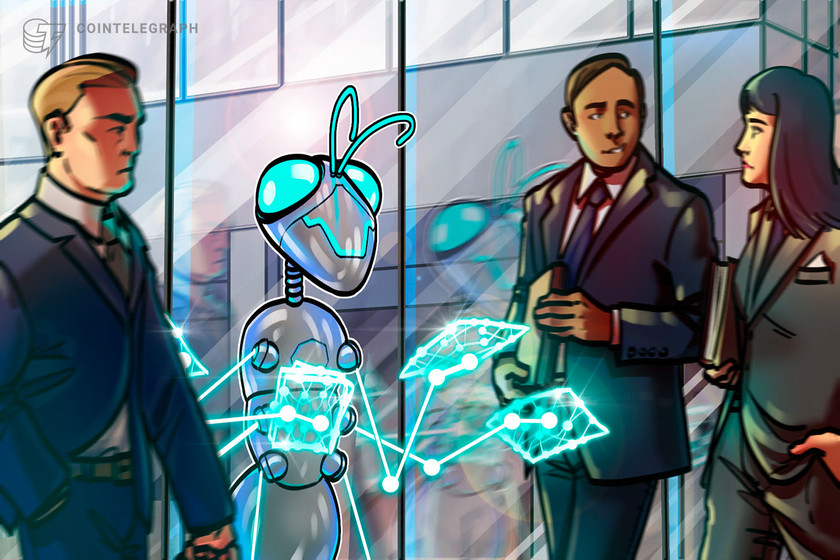The promise of smart contract adoption is held back by crypto silos

Smart contracts present one the most promising tech solutions for business, but there are still barriers that have to be addressed.
The internet is buzzing over recent developments in decentralized finance, or DeFi — smart contracts are hotter than ever. You might think you missed the coronation ceremony, but smart contracts are actually used in only a small corner of the crypto world, albeit a corner worth billions of dollars. It’s a promising concept that has gone widely unused in the business world.
Despite the headlines and in spite of crypto-cloistering, smart contracts are not overhyped. The ability to execute secure and complex business transactions is a barrier that keeps plenty of people out of business altogether. Moreover, every major company in the world would jump at a meaningful chance to reduce expenses, due to the endless legal fees involved with business transactions. Although tedious and expensive, unknown business partners must develop a sense of trust between each other to ensure the fulfillment of contracted work. Smart contracts can streamline this process and lower costs for everyone.
While all of this is true and exciting, smart contracts are almost only used in the world of cryptocurrencies. Although there are billions of dollars flowing through smart contracts, they remain locked in this speculative world of crypto trading. What are smart contracts, and what will it take to turn these transformative promises into a popular process?
What makes a contract smart?
There’s nothing inherently smart about smart contracts. Like SpaceX and Chumbawamba, smart contracts are poorly named. The easiest way to understand smart contracts is to think of them as computer programs. As with any contract, these programs bring together two or more parties in a binding agreement. While normal contract agreements are paper-intensive (even digitally), heavily reliant on legalese and slow to form consensus, smart contracts are relatively lightweight, fast and flexible.
Smart contracts are natural outgrowths of blockchains and related distributed ledger technologies, or DLTs. Because of the transparency and immutable nature of DLTs, smart contracts bring parties together through security and trust. Before blockchains, the idea of digital contracts was unimaginable, as each party would have no way to ensure digital trust and security.
The legal expertise and careful deliberation needed for contract work are replaced by code and automation in smart contracts. Once two or more parties enter into a smart contract, and the contract is automatically saved under ideal, secure conditions. This helps businesses save time and money, while also opening up for more opportunities. So, what’s the holdup? Why aren’t smart contracts more mainstream?
That’s going to cost you
Since most smart contracts are built on blockchains, every transaction requires a fee to validate the block and inscribe it into the DTL. The reason for the fee is that blockchains rely on miners to perform the computing labor involved, by adding new blocks to the network. No fees means no incentive for miners, and this would not bring new transactions. So, blockchains have fees, but what’s worse is that the fees are volatile, fluctuating according to network traffic and currency valuations.
Related: Going feeless is the only way to enable blockchain adoption
If you’re a business owner thinking about moving parts of your operation to a blockchain-enabled smart contract, problems with fees could become a major headache. If you’re an individual who would like to leverage blockchains to protect yourself in a business agreement, the fees involved with smart contracts might be too expensive to consider. A zero-fee structure would be ideal, but the fees must be transparent and stable, so people can fit smart contracts within their budget.
The most widely used smart contract platform in the world right now, Ethereum, becomes more expensive to use the more popular it becomes. This is the opposite of how a business is supposed to function, and a clear sign that something is fundamentally wrong with the smart contract design.
Stuck in the silo
Email is a great tool that has transformed the way people do business. However, imagine if email were only possible between users of the same service. If that were the case, we might see some limited email operations within larger offices, but certainly not in the mainstream.
Smart contracts do not have this interoperability at the moment. This means that if a company wants to enter into a smart contract with another company, both companies must be working with the same cryptocurrency. This may lead to limited interactions between closely aligned business partners, but the separation of different protocols into isolated silos will never be widely adopted.
It’s not reasonable to expect any major business to commit to one cryptocurrency, especially given the degree of volatility in crypto. Unfortunately, almost every smart contract protocol today is intimately bound to its parent blockchain, and getting these various protocols to work with one another is no easy task.
Who’s in charge here?
The aforementioned problems of lower or non-existent fees and of interoperability can be solved from within the crypto community by developers working toward a common goal. However, there are other issues at play, such as the environmental impact of mining, lag time in executing transactions on a DLT, privacy protocols on public ledgers, and the “oracle” problem of bringing outside data into the DLT environment.
A bigger problem that belongs in a completely different category is legal jurisdiction, which cannot be solved internally. In conventional or current contract law, a jurisdiction is always established within the terms of the contract. There are entire branches of international and business law that govern accountability and consequences if and when things turn south.
Smart contracts represent a unique development for the entire concept of jurisdiction. Legally, cryptocurrencies operate in a kind of new realm of sovereignty. An agreement that lives in a decentralized, global network of computers, operating on a currency that belongs to no government, and executed by an open-source computer code is a difficult entity to “place.” This is a big reason as to why crypto remains mostly unregulated — what many people refer to as the new “Wild West.” If you’re in a smart contract and the other party wrongs you, which court would take your claim?
The solutions to these problems will come as DLTs grow and gain more power. It’s up to governments and other regulatory authorities to build common legal frameworks that can accommodate smart contracts and other DLT transactions. At the same time, these new technologies will never achieve the required credibility and acceptance if crypto developers continue to act like the gold prospectors in 19th-century California. It’s important that the community continues to think long term and builds up for mass adoption, rather than throwing elbows in this frenzied cash grab.
The views, thoughts and opinions expressed here are the author’s alone and do not necessarily reflect or represent the views and opinions of Cointelegraph.








